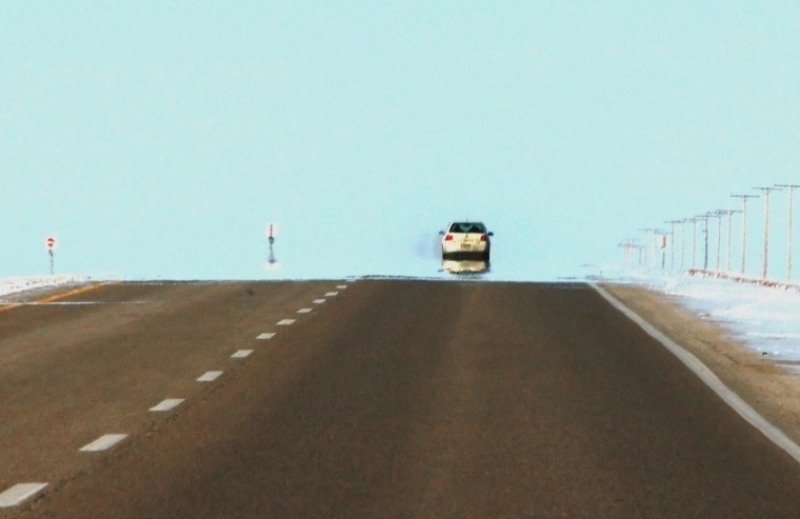
Optical illusions that every driver can face
Content
It is known that the human brain is easily fooled by optical illusions. This phenomenon turns into a problem when driving a car. Even a slight visual deception can lead to disaster, and there are more than a dozen of them. That is why it is necessary to know about the most dangerous optical illusions, because forewarned means forearmed.

Illusion of dark cars
This visual trick is that dark-colored cars in poor lighting appear closer than they actually are.
If two cars drive parallel to each other on the road: one is dark and the other is light, then visually it will seem that the dark car is moving slower and is closer to the white one. This can affect the assessment of the traffic situation and, as a result, the occurrence of an accident, for example, when trying to overtake when driving in the oncoming lane.
The way out of the situation is simple - use the high beam, illuminating a dark car to adequately assess the distance to it and the speed at which it is moving.
speed illusion
This type of optical illusion occurs during prolonged monotonous movement along the highway or in the tunnel. The danger lies in the inadequate perception of the vehicle's speed. It begins to seem to a person that the speed of the car is insignificant and he mechanically accelerates more and more. As a result, during emergency braking or a turn, the driver does not take into account the increased speed and gets into an accident.
An on-board computer or a navigator that beeps when the speed limit is exceeded helps to deal with this problem. This is also done by the traffic police through the use of radar, but that's a completely different story.
Illusion of distance
Large objects at a distance seem smaller than they really are - the correct estimate of the distance to the object is violated.
A large truck or wagon seems small and the driver thinks that it is still far away. Its sudden appearance before the eyes becomes a surprise, a person does not always have time to react and slow down.
To combat this phenomenon, it is necessary to observe the high-speed mode of movement, then, with sudden braking, the driver will have time to stop, no matter what obstacle arises in front of him.
Wide road illusion
Occurs as a result of an incorrect assessment of the width of the carriageway.
The human eye calculates this value relative to the height of nearby vertical objects. For example, when driving on a street with tall trees, fences, or houses located on the edge of the road, the driver thinks that the roadway is narrower than it really is, and he slows down. And when these objects disappear, it seems that the road has become wider, and he adds speed, starting to behave bolder, although in fact nothing has changed.
If the driver knows about the existence of such a phenomenon, then he will be more attentive on the road. Especially in those parts of it where vertical objects systematically appear. An example of an inadequate assessment of the width of the roadway is the situation with a driver who, trying to overtake a truck, drives into the oncoming lane, not taking into account the fact that the oncoming car simply has nowhere to go on a narrow road. The result is an accident.
Illusion of turns
This type is characteristic of mountain routes and passes, replete with turns of different radii. At some point on such a road, the driver ceases to adequately assess the steepness of the turns. Very often the roundabouts appear to be elliptical, the section of the road may seem shorter than it actually is and steeper.
To fight accidents in these conditions, bright direction indicators installed on the fenders help. At night, on such a road, you need to turn on the high beam and all the headlights on the car.
Illusion of steep slopes
On a steep descent with a curve, it may seem to the driver that the section of road ahead is very narrow. This is due to the deterioration of spatial vision. This phenomenon forces the driver to press against the central axis of the road. This is dangerous because at the turn he may collide with oncoming traffic.
It must be remembered that on those sections of the road where it really narrows, there are signs indicating this. Where there are no signs, there is an optical illusion. In any case, before each turn on a steep descent, you should slow down and be especially careful.
When driving a car, you need to remember that the human brain is very easy to deceive - such phenomena happen everywhere. Optical illusions on the road are very dangerous for their consequences, which is why you need to be extremely careful while driving, especially in unfamiliar areas and at night.
